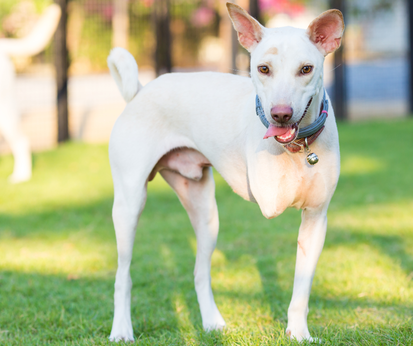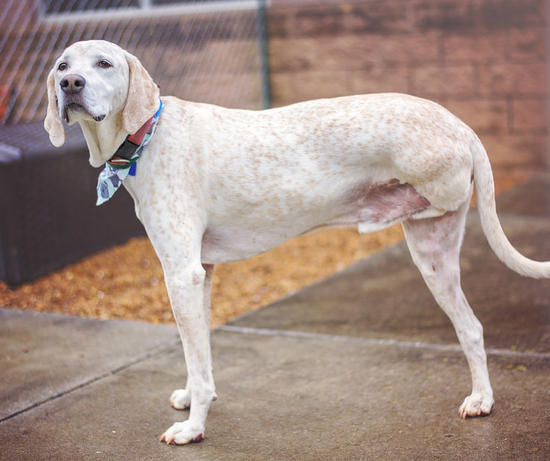|
As a physiotherapist, I understand the significance of recognising and addressing postural adaptations, especially in our canine amputees. There are several reasons for postural adaptations, such as injury or trauma, muscle weakness and imbalance, and to alleviate pain and discomfort, to name a few. These adaptations can significantly affect a dog's overall function and well-being. Dogs cannot express their pain or discomfort in words, making it a challenge to diagnose and treat their specific needs. In this blog post, we will specifically discuss the various postural adaptations that occur in dogs following front-limb and hind-limb amputations. We will also explore how the field of physiotherapy can play an indispensable role in their road to recovery. Postural Adaptations in Front Limb Amputees: Losing a limb is a significant change for any dog. However, dogs usually adapt quickly after removing a limb, especially younger ones. But younger dogs have to spend the rest of their lives adjusting and potentially overusing their remaining limbs to compensate. On the other hand, older dogs may not adapt as fast, but they have a shorter period to adjust their posture and experience less load through the remaining limbs. In cases of front limb amputation, dogs tend to shift 14% of their weight into the remaining front leg and 17% into their hind end (Jarvis et al 2013.) This adaptation can lead to an increased strain on the remaining carpus joint (equivalent to the wrist joint,) which can flatten out and become extended over time. This condition is called carpal hyperextension. As a canine physiotherapist, my role is to address these postural adaptations and create customised exercises to strengthen the remaining limbs and improve balance. My focus is different for each dog but generally my exercises aim to encourage weight shifting, boost core stability, and refine proprioception. Along with exercises, manual hands on techniques such as massaging and stretching to address tight and over worked muscles is equally important in the amputee dog. With a front limb amputee, you may notice a more pronounced head bob up and down to compensate for the missing front limb. This can lead to muscle imbalances or tightness in these areas as they rely more heavily on their remaining limbs. Massage or stretching exercises aim to alleviate tension and improve range of motion in these areas of interest. Postural Adaptations in Hind Limb Amputees: Hind limb amputees face unique postural challenges. After losing a hind limb, dogs tend to shift their weight forward onto their front limbs, especially the diagonal front limb from the amputated side. Studies suggest this weight shift can be as high as 33% (Fuchs et al 2013,) leading to muscle imbalances and potential joint issues over time. To compensate for the loss, dogs may adopt a crouched posture or lean to one side during movement, which can cause dysfunctional spinal movement, affecting their gait and balance. As with a front limb amputee, the treatment approach for hind limb amputees focuses on fortifying the remaining hind limb, improving weight distribution, and promoting proper alignment during gait.
Strengthening the core muscles is a vital aspect of rehabilitation for hind limb amputees. These muscles play a crucial role in maintaining stability and providing support during movement. I often use a myriad of exercises to engage the abdominal and deep back muscles to support and improve overall balance and stability. Proprioception training is equally important. Proprioception is the body's ability to sense its position in space, which may be compromised in amputee dogs. These exercises challenge the dog's balance and coordination, progressing from basic postural sets to advanced dynamic exercises as the dog improves. The role of assisted devices: Assistive devices, like braces or prosthetics, can be game-changers for some dogs. They provide extra support and stability and improve the dog's overall gait pattern, reducing strain on the remaining limbs. However, their use requires a judicious assessment and ongoing monitoring by a qualified physiotherapist to ensure proper fitting, adjustments, and regular follow-ups. Physiotherapy and quality of life: Postural adaptations in canine amputees can profoundly impact their overall quality of life. Physiotherapy can improve their mobility and well-being by addressing these adaptations through a curated blend of targeted exercises, manual therapy techniques, and the strategic use of assistive devices. Physiotherapists work with dog owners, educating them about their pet's condition, teaching them how to perform exercises at home, and providing guidance throughout the rehabilitation journey. Understanding and addressing postural adaptations in canine amputees is critical to their rehabilitation and overall well-being. Physiotherapy interventions focus on strengthening the remaining limbs, enhancing weight distribution, fine-tuning alignment during gait, and harnessing the potential of assistive devices. By partnering closely with owners and implementing a comprehensive rehabilitation program, dogs can regain their independence and experience an enhanced quality of life. Jarvis, S. L., Worley, D. R., Hogy, S. M., Hill, A. E., Haussler, K. K., & Reiser, R. F. 2nd. (2013). Kinematic and kinetic analysis of dogs during trotting after amputation of a thoracic limb. American Journal of Veterinary Research, 74(9), 1155-1163. doi:10.2460/ajvr.74.9.1155. Fuchs, A., Goldner, B., Nolte, I., & Schilling, N. (2014). Ground reaction force adaptations to tripedal locomotion in dogs. Veterinary Journal, 201(3), 307-315. doi:10.1016/j.tvjl.2014.05.012. |
AuthorJoanna Whitehead Archives
June 2024
Categories
All
|



 RSS Feed
RSS Feed
